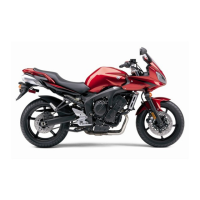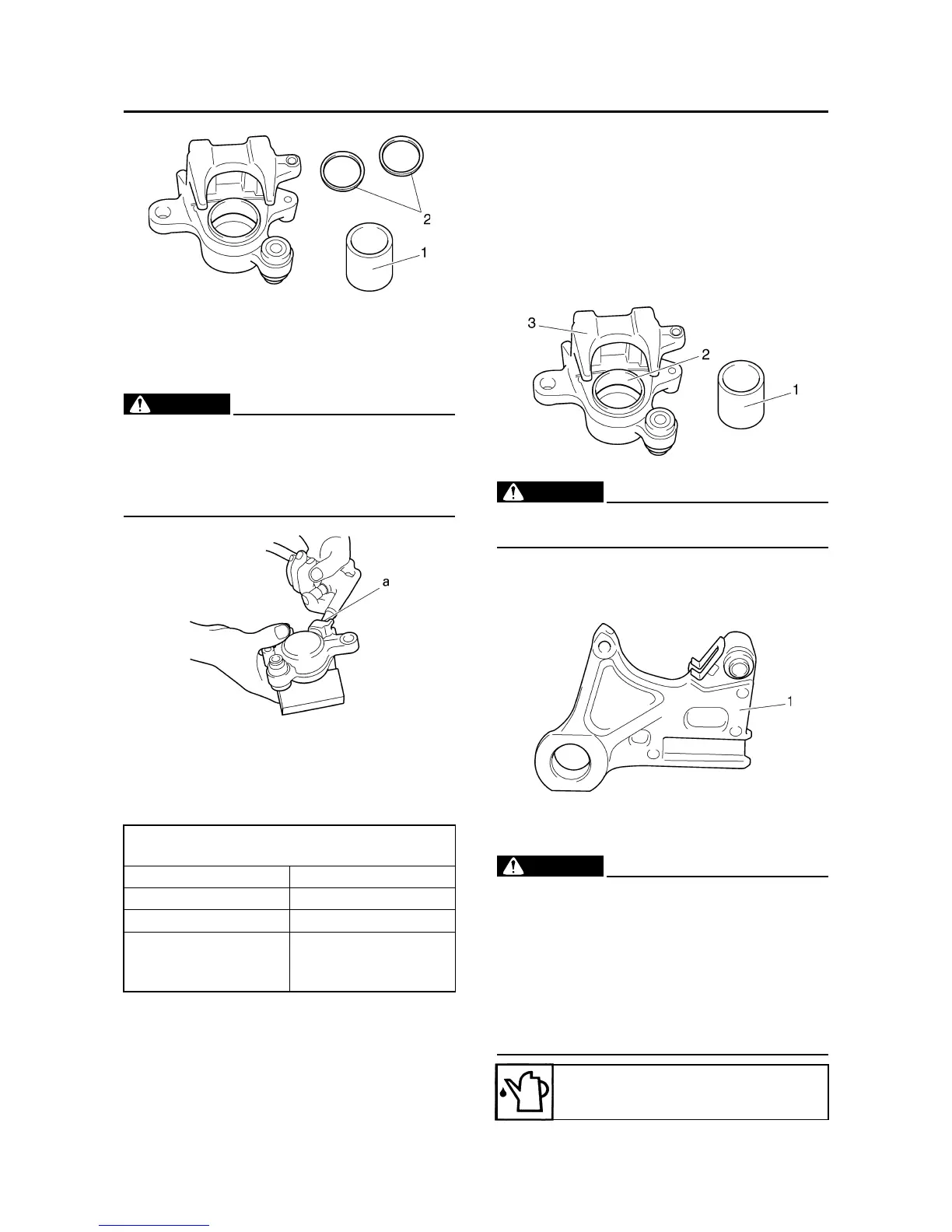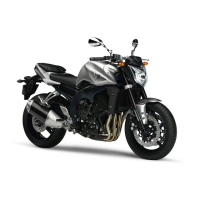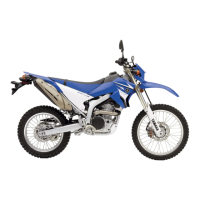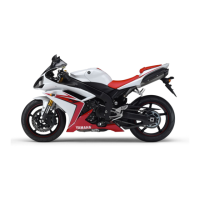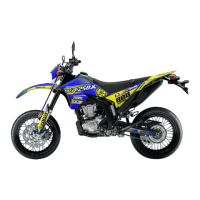REAR BRAKE
4-48
▼▼▼▼▼▼▼▼▼▼▼▼▼▼▼▼▼▼▼▼▼▼▼▼▼▼▼▼▼▼
a. Blow compressed air into the brake hose
joint opening “a” to force out the piston from
the brake caliper.
WARNING
EWA13550
• Cover the brake caliper piston with a rag.
Be careful not to get injured when the pis-
ton is expelled from the brake caliper.
• Never try to pry out the brake caliper pis-
ton.
b. Remove the brake caliper piston seals.
▲▲▲▲▲▲▲▲▲▲▲▲▲▲▲▲▲▲▲▲▲▲▲▲▲▲▲▲▲▲
EAS22640
CHECKING THE REAR BRAKE CALIPER
1. Check:
• Brake caliper pistons “1”
Rust/scratches/wear → Replace the brake
caliper pistons.
• Brake caliper cylinders “2”
Scratches/wear → Replace the brake cali-
per assembly.
• Brake caliper body “3”
Cracks/damage → Replace the brake cali-
per assembly.
• Brake fluid delivery passages
(brake caliper body)
Obstruction → Blow out with compressed
air.
WARNING
EWA13610
Whenever a brake caliper is disassembled,
replace the brake caliper piston seals.
2. Check:
• Rear brake caliper bracket “1”
Cracks/damage → Replace.
EAS22650
ASSEMBLING THE REAR BRAKE CALIPER
WARNING
EWA13620
• Before installation, all internal brake com-
ponents should be cleaned and lubricated
with clean or new brake fluid.
• Never use solvents on internal brake
components as they will cause the piston
seals to swell and distort.
• Whenever a brake caliper is disassem-
bled, replace the brake caliper piston
seals.
Recommended brake component
replacement schedule
Brake pads If necessary
Piston seals Every two years
Brake hoses Every four years
Brake fluid
Every two years and
whenever the brake is
disassembled
Recommended fluid
DOT 4
